Critters of
Berry Springs Park and Preserve
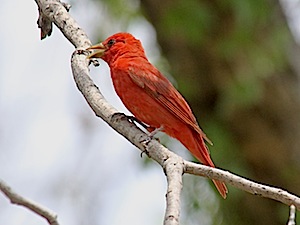
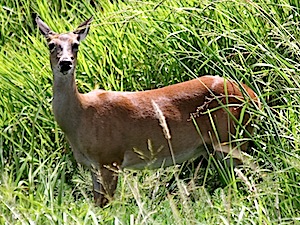

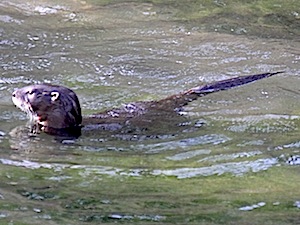
(Procambarus clarkii)
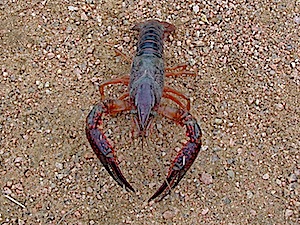
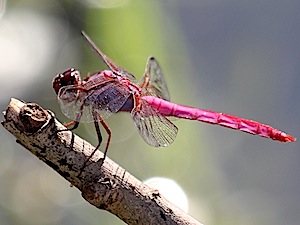
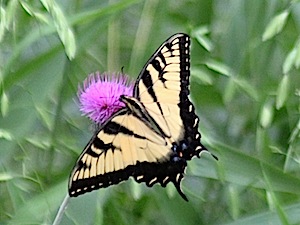
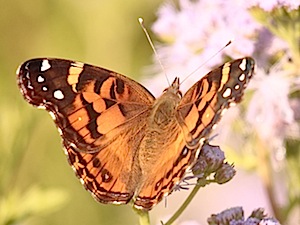
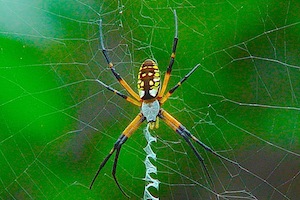
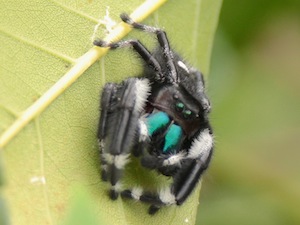
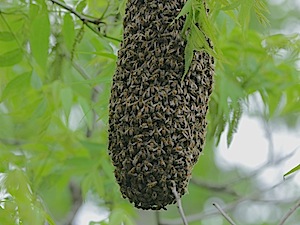
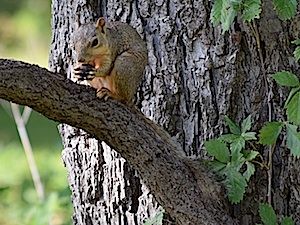

.jpg)
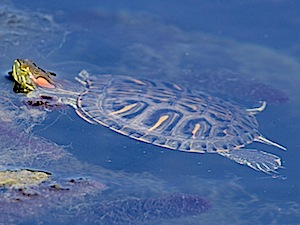
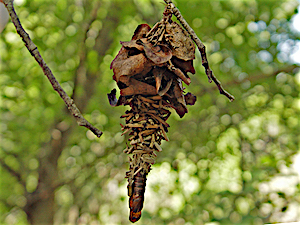
Critters of |
|
|---|---|
| Summer Tanager | |

|
Berry Springs is incredibly rich with more than 140 species of birds to be seen in the park. This beautiful example of a Summer Tanager is often seen in the late summer and fall. Berry Springs is a well known favorite spot for the local birders to visit. More birds |
| White-tail Deer | |
| The restored prairie and forests of the park provide White-tail deer with excellent food year round and plenty of spaces to sleep. If you stumble upon a spot in the prairie where the grass has been flattened in a rough circle about six feet across you will have found where one or a group of deer bedded down for the night. This doe is clearly watching the photographer very carefully! |  |
| Texas Coral Snake | |
 |
Coral Snakes are not very dangerous during the day as they spend it sleeping in a convenient pile of leaf litter. Most bites occur when a hiker accidentally steps on the sleeping snake. Fortunately this one woke up when the hiker approached and is watching warily while its photo is being taken. It often freezes when a person approaches and so it was possible to get this nice photo! There is a healthy population of snakes in the park so one should always be careful! More snakes |
| Northern River Otter | |
| This otter is out for a cool summer swim on a hot Texas day. It is a real treat to see an otter in Texas and elsewhere since their habitats are often destroyed by pollution, farming and the construction of cities. They were also heavily hunted for their thick and glossy fur in the past and in some places are still hunted today. As a result their numbers are sadly continuing to decline. They live in underground tunnels and can usually enter the water by one of their tunnels. They love to eat fish but often can be seen eating other animals such as turtles, frogs and even birds! |  |
|
Fresh Water Crawdad (Procambarus clarkii) |
|
 |
This fellow was not very happy at having his photo taken and threatened the photographer a number of times by advancing and waving his claws angrily. He was even less happy while being rescued from being bird food. He was found on the gravel path about 100 yards from the nearest water on a very hot day and was clearly an escapee from some hungry bird. He should be happier now that he has been returned to the local pond. |
| Roseate Skimmer Dragonfly | |
| Roseate Skimmers are very adaptable dragonflies. They can live in all sorts of environments including those that have been highly disturbed by man. They have a special love for mud as this is where they lay their eggs! The also prefer open water but can be found just about anywhere in the park. This one is clearly seen to be a male because of its colorful roseate abdomen. More Dragonflies and Damselflies |  |
| Eastern Tiger Swallowtail | |
 |
This wonderful butterfly is often seen in the park from spring through fall. You can tell that this one is a male because it is neither black nor does it have a blue band at the bottom of its wings. Females can be either yellow or black. It lays eggs several times during its relatively long life of a few months! It is the first butterfly that was drawn in North America. |
| American Lady Butterfly | |
| The American Painted Lady (Vanessa virginiensis) is a medium sized butterfly which loves flowery environments. Its larvae feed entirely on plants of the daisy (Asteraceae) family. Look for their black banded caterpillars on Ironweed and Ragweed plants. The butterflies prefer Asters, Goldenrods, Milkweeds and Vetches. It can be found throughout North America and sometimes in western Europe. To identify this butterfly look two large eyespots on the bottom of each rear wing. |  |
| Yellow Garden Spider | |
 |
Sometimes it is difficult to walk around in the park without running into the complex spider webs that these gorgeous yellow orb weavers often create. They are masters of engineering creating a special zig-zag network in the middle of their webs. This female uses the more standard web shape to tell if any potential prey are in contact with it. The central part of this web is only associated with spiders that are active in the daytime and no one really knows its purpose. They tend to be rather shy but when they do bite but their venom is fairly harmless. |
| Bold Jumping Spider | |
| This amazing spider (Phidippus audax) can jump more than 3 feet when hunting prey or escaping predators! For a human that would be more than the length of a football field. It is a predator but does not build webs to catch prey. Instead, its 8 eyes are in front giving it great stereo vision so that it can see how far it is to the prey and then jump on it. It does spin silk that is used for laying eggs or hiding. It can also play spiderman using its silk to swing toward prey or away from predators. It usually hangs out in grasslands. It is not aggressive unless cornered and if you are bitten this spider's venom is not considered particularly harmful. |  |
| Honey Bee Swarm | |
 |
There are a number of Honey Bee nests in hollow trees around the park. On occasion the nests become overpopulated and the queen will leave the nest along with thousands of worker bees. The swarm, as seen here in the field near the stone amphitheater, will only travel a short distance and stop and indeed there is a nest not far from where this swarm was seen. At that point scout bees begin looking for a new location for their home. Generally, within 3 days the new location is found and the swarm moves in. The old nest will have a number of new queens hatch out after the old queen departs and sometimes these queens will also swarm and the population of the old nest can be severely depleted. |
| Eastern Fox Squirrel | |
| The Fox Squirrels (Sciurus niger) in Texas are the largest tree squirrel in North America and can exceed 2 feet in length! They are ideally suited for Berry Springs since they like to live in forested areas with open understories. They also prefer to live in areas where there is an abundance of nuts such as are found in the pecan tree groves of Berry Springs. They have tremendously long tails as can be seen in the photograph. They prefer to build their dens in tree cavities and will often have more than one home. When they cannot find suitable cavities they will also resort to building nests out of leaves and sticks. Contrary to popular belief they do not rely solely on a diet of nuts. They are quite happy to eat insects, tree buds and flowers, roots and birds' eggs and prefer a solitary life. Thay also have to be very careful at Berry Springs because there are a number of predators that like to dine on them. These include bobcats, hawks, dogs, owls, rat snakes and even raccoons! |  |
| Spiny-backed Orb-weaver | |

|
This fingernail sized spider is one of the most distinctive looking spiders found in the park and so it is quite easy to identify. It can be black, white or yellow with red spots. Everyone should have some of these spiders in their yard as they hunt mosquitoes, flies and other small insects. This particular spider built a nice web right next to the the trail where the small ponds occur in the Nature Trail area. It posed nicely at head height for the photo. Notice that it is upside down in the photo with the head at the bottom. This means that it is waiting on some pray to fly into its web. Although they can bite the bite is roughly equivalent to that of a mosquito and so they are relatively harmless. Several males can sometimes be seen hanging on single silk threads near the female. The males drum on the webs of the females to announce themselves. If the female accepts a male it then moves onto her web and lives there for the rest of his life. The males die about a week after mating and the females die right after laying her eggs. The eggs overwinter and then hatch in the spring. |
| Io Moth Caterpiller | |
| This incredibly beautiful caterpillar is one you want to watch out for! It is not a picky eater and so can be found eating new-growth leaves on almost any new plant. If you get a sting from this guy you will never forget it as the pain is much worse than the average bee sting. Every spine that you see on this caterpillar is venomous and should never be touched as it will break off and could remain in the skin. It multiplies rapidly and can strip a plant of its leaves quickly. Fortunately it provides food for many different animals including birds, spiders, many parasites (flies) and even hornets! This particular caterpillar has gone through all five stages of development and is now ready to begin constructing its cocoon. When it emerges it is one of the most beautiful moths you will see with two large black "eyes" with yellow rings on its back wings making it look like a much larger animal. | .jpg)
|
| Red-eared Slider | |

|
Red-eared sliders are very easy to recognize by the distinctive red stripe on the side of the head where the ears would normally be found. The ears of this gulf coast native turtle are internal and work best underwater. These turtles can often be seen sunning themselves on a log or rock because they have no control over their body temperature and must use the sun to keep warm. They eat both plants and animals but their diet consists mainly of aquatic plants. The live both in and out of the water and become very sluggish in the winter time. They do not hibernate but slow down their metabolism by about a factor of 4 so they can stay on the bottom of a pond for many weeks. If you see one of these on land do not touch it or handle it in any way because they are known to be carriers of the Salmonella bacteria. If you do come into contact with them wash your hands carefully as soon as possible. Red-eared sliders were the most common turtle to be kept as a pet in the USA and other countries. Because of this many have escaped and is now on the top 100 international list of most invasive species. Some people will recognize them as the model for the popular Teenage Ninja Mutant Turtles. |
| Liveoak Bagworm Cocoon | |
| This is perhaps the strangest cocoon to be found in the park. Inside is a larva which could be any one of a half dozen different types of bagworm moths. Since there has been no careful study of which types of cocoons produce the different species of bagworm moths the only way to tell what is inside is to watch and see what emerges! They spend about 3 weeks in the cocoon and most emerge starting in April and continue throughout the summer. The bagworm moths can infest and kill a tree but fortunately there are a number of enemies that keep this moth under control in this area. For this reason we do not have to worry about this critter and can enjoy its unique method of building its cocoon! | 
|
More Galleries |
|